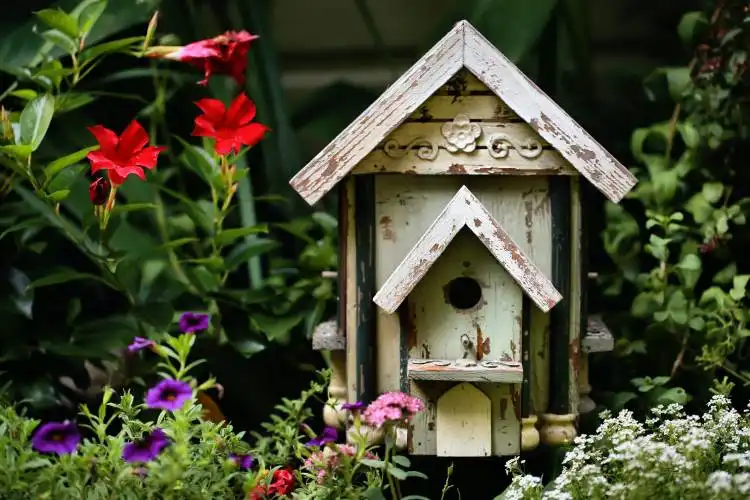Start a Flower Shop
Blooming into Business: The Art of Owning a Flower Shop
| Updated


FLOWER SHOP
If you've ever found yourself daydreaming about roses, tulips, and daisies instead of Excel spreadsheets and conference calls, launching your own flower shop might just be the bouquet of happiness you need! Running a flower shop involves selling different types and arrangements of flowers for various occasions. Your daily scent-sational routine could include creating custom bouquets, providing decoration for events, and bringing smiles to customers' faces when they pick up that special arrangement for a loved one. This isn't just business, it's the art of turning emotion into blossom!
Jump to Business Plan
RELATED BUSINESS IDEAS
Browse ALL Arts & Crafts Business Ideas
Discover Your Perfect Domain
Unlock the door to your online success with our hand-picked selection of premium domain names. Whether you're starting a new venture or rebranding an existing one, the right domain can set the tone for your digital presence. Browse through our curated list, each with its unique potential to enhance your brand's visibility and credibility.
FLOWER SHOP MINI BUSINESS PLAN
This a quick reality check to help you identify the strengths and weaknesses of your business concept before you dive in.
Business Analysis: Flower Shop
Expected Percent Margins:
- Gross Margin: 40-50%
- Net Profit Margin: 5-10%
Earnings Expectations:
- Daily Earnings: $150-$400 (Depends on location, time of the year, and demand)
- Weekly Earnings: $1,050-$2,800
- Monthly Earnings: $4,500-$12,000
- Annual Earnings: $54,000-$144,000
Actions to Hit Those Numbers:
Inventory Management:
- Initial Investment: Between $10,000 and $50,000 for store setup and inventory
- Supplier Network: Establish relationships with reputable local and international flower suppliers
Marketing and Customer Acquisition:
- Social Media: Consistently post across platforms including Instagram and Facebook to capture local community and share visual flower arrangements
- Local SEO: Optimize website and Google My Business for local search to attract more customers
Sales and Customer Experience:
- Staffing: Employ dedicated florists who can create exquisite designs and provide superlative customer service
- Cross-Selling: Cross-selling other gift items along with flower bouquets
Cost Control:
- Rent: Location is key in this business. Choose a location where rent doesn't exceed 15% of expected monthly sales
- Utilities and Maintenance: Budget around $500-$700 per month. Flower shops require refrigeration, adding to electricity costs
Business Operations:
- Open Hours: Aim for at least 8-10 operational hours per day, with extended hours during festive seasons
- Transaction Volume: Aim for at least 20-30 transactions per day, considering both walk-ins and online orders
Please remember these are rough estimates and the actual figures could be influenced by many variables, including geographic location, demand, competition, and business efficiency. Always work closely with a business consultant to get a more precise understanding of your specific situation.
NOT WHAT YOU HAD IN MIND? Here are more ideas



Browse ALL Arts & Crafts Business Ideas
Grab Your Business Website Name
Before you get caught up in the whirlwind of setting up your business, invest in a domain name. It's a small but significant step that lays the foundation for your brand and makes it easier for customers to find and trust you. Just like you wouldn't build a house without securing the land first, don't build a business without securing your domain name.
"Why? Can't that wait?" Here's why it shouldn't
Step 1: Determine if Starting a Flower Shop is Right for You
Breakdown of Startup Expenses
Before starting a flower shop, it is important to understand the startup costs associated with the business. This includes the costs of renting a space, purchasing equipment and supplies, and hiring staff. Additionally, you may need to pay for licenses, permits, and insurance. It is important to create a detailed budget that includes all of the startup costs so that you can be prepared for the financial commitment.
Breakdown of Ongoing Expenses
In addition to the startup costs, there are ongoing expenses associated with running a flower shop. These include the costs of purchasing flowers, paying staff, and maintaining the shop. Additionally, you may need to pay for marketing and advertising, as well as utilities and other overhead costs. It is important to understand the ongoing expenses associated with running a flower shop so that you can plan for them and budget accordingly.
Examples of Ways to Make Money
There are a variety of ways to make money with a flower shop. This includes selling flowers and other products, offering services such as flower arranging and delivery, and hosting events such as weddings and other special occasions. Additionally, you may be able to offer classes and workshops or partner with other businesses to offer discounts and promotions. It is important to understand the different ways to make money with a flower shop so that you can maximize your profits.
Step 2: Name the Business
When choosing a name for your flower shop, it is important to consider the impact it will have on potential customers. A good name should be memorable and easy to pronounce. It should also reflect the type of business you are running, such as incorporating words like “flower” or “bloom”. Additionally, it should be unique and not too similar to other flower shops in the area. It is also important to consider the potential for a website domain name and social media handles. If the name you choose is already taken, you may have to come up with a different one.
Register the Business Name
Once you have chosen a name for your flower shop, you will need to register it with the state. This will ensure that no other business can use the same name. Depending on the state, you may need to register with the Secretary of State or the Department of Revenue. You may also need to register with the county or city. Additionally, you may need to obtain a business license or permit. This will vary depending on the type of business you are running.
Trademark the Business Name
It is also important to trademark your business name. This will protect it from being used by other businesses. You can register your trademark with the United States Patent and Trademark Office. This will ensure that no other business can use the same name. Additionally, it will give you exclusive rights to use the name in advertising and other promotional materials.
Create a Logo
Creating a logo is another important step in naming your flower shop. A logo is a visual representation of your business and can be used on signage, business cards, and other promotional materials. It should be simple and easy to remember. Additionally, it should be unique and reflect the type of business you are running. You can create a logo yourself or hire a professional designer to do it for you.
Step 3: Obtain Licenses and Permits
Before starting a flower shop, it is important to obtain the necessary licenses and permits. Depending on the state, there may be different licenses and permits required. For example, in some states, a business license is required to operate a flower shop. Additionally, a seller’s permit may be necessary to purchase flowers and other supplies from wholesalers. Furthermore, a license may be required to sell certain types of flowers, such as roses. It is important to research the specific licenses and permits required in the state the flower shop will be located.
How to Obtain Licenses and Permits
Once the necessary licenses and permits have been identified, the next step is to obtain them. This can be done by visiting the local government office or website. The application process for each license and permit may vary, so it is important to read the instructions carefully. Additionally, the application may require a fee, so it is important to have the funds available. Once the application is complete, the flower shop should receive the necessary licenses and permits in the mail.
Cost of Licenses and Permits
The cost of licenses and permits varies depending on the state and type of license or permit. Generally, the cost of a business license is around $50. Additionally, the cost of a seller’s permit is usually around $50. Furthermore, the cost of a license to sell certain types of flowers, such as roses, may be around $100. It is important to research the cost of the licenses and permits before applying for them.
Benefits of Obtaining Licenses and Permits
Obtaining the necessary licenses and permits is important for the success of the flower shop. Having the proper licenses and permits shows that the business is legitimate and can be trusted by customers. Additionally, having the proper licenses and permits allows the flower shop to purchase flowers and other supplies from wholesalers. Furthermore, having the proper licenses and permits allows the flower shop to operate legally and avoid any fines or penalties.
Step 4: Find a Location
When choosing a location for a flower shop, there are several factors to consider. First, the location should be easily accessible to customers. This means that the shop should be located in a place that is easy to get to and has plenty of parking. Additionally, the shop should be located in an area with a high foot traffic, such as a busy shopping center or a downtown area. It is also important to consider the competition in the area and the demographics of the potential customers. For example, if the flower shop is located in a residential area, it may be beneficial to offer delivery services to customers who may not be able to come to the shop.
Leasing or Buying a Space
When it comes to finding a location for a flower shop, there are two main options: leasing or buying a space. Leasing a space is often the more affordable option, as it requires less capital upfront. However, it is important to read the lease agreement carefully and make sure that the terms are favorable. Additionally, it is important to consider the length of the lease and the potential for renewal. Buying a space is a more expensive option, but it allows for more control over the space and the potential for long-term growth. It is important to consider the cost of the space, the potential for appreciation, and the cost of any renovations that may be necessary.
Step 5: Create a Business Plan
Creating a business plan is an important step in starting a flower shop. A business plan should include a detailed description of the business, a market analysis, a competitive analysis, a description of the management team, a description of the products and services offered, a marketing plan, a financial plan, and a timeline.
The detailed description should include the purpose of the business, the mission statement, and the goals and objectives. It should also include the legal structure of the business, such as whether it is a sole proprietorship, partnership, or corporation.
The market analysis should include an analysis of the target market, the size of the market, and the trends in the industry. It should also include an analysis of the competition, including their strengths and weaknesses.
The competitive analysis should include an analysis of the competition’s products and services, pricing, and marketing strategies. It should also include an analysis of the competitive advantages of the business.
The description of the management team should include the qualifications and experience of the management team. It should also include the roles and responsibilities of each team member.
The description of the products and services offered should include a description of the products and services, the pricing, and the delivery methods.
The marketing plan should include an analysis of the target market, the marketing strategies, and the budget. It should also include a plan for tracking and measuring the success of the marketing efforts.
The financial plan should include a budget, a cash flow statement, and a profit and loss statement. It should also include a plan for financing the business.
The timeline should include the milestones and deadlines for each step in the process. It should also include a plan for monitoring progress and adjusting the plan as needed.
Step 6: Secure Financing
Securing financing is a critical step in starting a flower shop. There are several sources of financing available to entrepreneurs, including traditional bank loans, private investors, and government grants. When considering financing options, it is important to compare the terms and interest rates of each option to determine which is best for the business. Additionally, it is important to consider the amount of money needed to cover startup costs, such as purchasing equipment and supplies, and ongoing costs, such as rent and utilities.
Create a Business Plan
Creating a business plan is an important step in the process of starting a flower shop. A business plan should include a detailed description of the business, including the products and services offered, the target market, the competitive landscape, and the financial projections. Additionally, the business plan should include a marketing plan, which outlines the strategies and tactics used to attract and retain customers. Finally, the business plan should include a financial plan, which outlines the sources of financing, the startup costs, and the ongoing expenses.
Step 7: Purchase Supplies
When starting a flower shop, there are several types of supplies that are necessary to purchase. These include fresh flowers, vases, floral foam, ribbon, and other decorative items. Depending on the type of flower shop, additional items such as gift baskets, balloons, and other items may be needed. It is important to research the types of supplies needed for the type of flower shop desired.
Where to Purchase Supplies
When purchasing supplies for a flower shop, it is important to find a reliable supplier. This can be done through research online or through word of mouth. It is important to compare prices and quality of the supplies to ensure that the best deal is found. Additionally, it is important to consider the shipping costs and delivery times when purchasing supplies.
Establishing a Budget
When purchasing supplies for a flower shop, it is important to establish a budget. This budget should include the cost of the supplies, shipping costs, and any additional costs associated with the purchase. Additionally, it is important to consider the cost of any additional supplies that may be needed in the future. This will help to ensure that the flower shop is able to stay within budget.
Purchasing in Bulk
When purchasing supplies for a flower shop, it is important to consider purchasing in bulk. This can help to save money in the long run as bulk purchases often come with discounts. Additionally, purchasing in bulk can help to ensure that the flower shop always has the necessary supplies on hand. This can help to reduce the need for frequent restocking and can help to keep the flower shop running smoothly.
Step 8: Market the Business
The eighth step in starting a flower shop is to market the business. There are many different ways to market a business, including traditional methods such as print and broadcast advertising, as well as digital methods such as social media and search engine optimization. It is important to understand the target audience and create a marketing plan that will reach them. Examples of marketing strategies include creating a website, joining local business associations, attending trade shows, and utilizing social media platforms. Additionally, offering discounts to customers and creating loyalty programs can help to attract new customers and keep existing customers coming back.
Advertising
Advertising is an important part of marketing a business. Advertising can be done through traditional methods such as print, radio, and television, as well as digital methods such as social media and search engine optimization. It is important to create an advertising campaign that is tailored to the target audience and budget. Additionally, advertising should be tracked to measure the effectiveness of the campaign.
Networking
Networking is another important part of marketing a business. Networking can be done through attending local business events, joining local business associations, and attending trade shows. Additionally, networking with other flower shops and florists can help to gain insight into the industry and create potential partnerships.
Promotions
Promotions are a great way to attract new customers and keep existing customers coming back. Examples of promotions include offering discounts, creating loyalty programs, and offering free delivery. Additionally, offering special promotions during holidays or special occasions can help to increase sales.
Step 9: Open the Business
Opening day is a big milestone for any business, and a flower shop is no different. To make sure the day goes smoothly, there are a few tips to keep in mind. First, make sure to have plenty of flowers on hand. This will ensure that customers have plenty of options to choose from. Second, make sure to have a staff of knowledgeable and friendly employees. This will help customers feel comfortable and ensure that they get the help they need. Third, make sure to have a good marketing plan in place. This will help spread the word about the business and attract more customers. Finally, make sure to have a good system in place to track customer orders and payments. This will help ensure that the business runs smoothly and efficiently.
Celebrate the Grand Opening
Once the business is open, it's time to celebrate! A grand opening event is a great way to get the word out about the business and attract more customers. Consider hosting a special event with discounts, giveaways, and other fun activities. Invite friends, family, and local business owners to the event. This will help spread the word and create a buzz about the business. Additionally, consider offering a special promotion or discount for the first few weeks of business. This will help draw in more customers and get the business off to a great start.
EXPLORE MORE CATEGORIES
Browse ALL Business Idea Categories
TAKE THE NEXT STEPS










